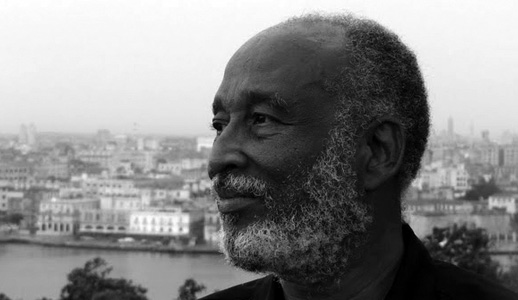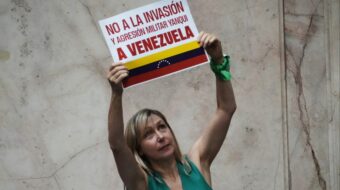
HAVANA TIMES – Under a title devoid of historical accuracy and objectivity, Roberto Zurbano (the director of Cuba’s Casa de las Americas publishing house) is trying to characterize the situation of blacks in Cuba today. As a critical evaluator of the subject, I share some of his assertions, but not in such absolute terms, much less with the lack of objectivity with which these are formulated or his conclusions in a recent The New York Times article.
History
Claiming that “For Blacks in Cuba, the Revolution Hasn’t Begun,” his argument doesn’t hold up, not even within the complex reality of Cuba today. Truly at the crossroads, the country is trying to find its own economically sustainable model so as not to repeat undergoing the degrees of economic dependence to which it was subject during three periods in less than a century (under Spain, the United States and lastly the USSR). During the final period (1960-1991), which was the most beneficial for the island, time was too short to definitively overcome the realities of a developing country.
Therefore, any explanation of what’s taking place today in Cuba with respect to blacks necessarily involves a deeper understanding of those periods of dependency, when poverty on the island was also massively white, though wealth was never black. This situation was something that dragged on for several centuries until the triumph of the Cuban Revolution in 1959.
It was then that the poor population in Cuba benefited from a social policy – an extraordinarily humanitarian one – that fought against and still fights against poverty and inequality to the very edge of egalitarianism.
Within the social reality generated by that policy, blacks and “mestizos” also benefited greatly. As a result, we now have a significant number of black physicians, scientists, intellectuals and skilled workers – a situation that we owe to this social policy that profoundly marked Cuban society during the 30 years after 1959.
There’s no denying that mistakes were made. One of them – perhaps the most significant – was to not consider “skin color” as a variable of social differentiation.
It wasn’t taken into account that because of their different historical starting point, blacks (in addition to being poorer) had suffered firstly for their enslavement and secondly from the disadvantages involved in their having had to endure racism and racial discrimination.
This meant they always stood in a position of disadvantage relative to whites, even though the latter were also poor in the main. Our society hadn’t been designed for whites, blacks and mestizos to be equal.
During the years of revolution – despite how humanitarian and radical its efforts could have been – it wasn’t possible to completely erase that ballast of colonial slavery. This is the explanation for many of the inequalities and social difficulties that continue to weigh upon us and that the revolution that started in 1959 has tried to solve.
Everyone involved in this process would like progress to be made more rapidly, but the subject is difficult and its treatment has been complicated by the accumulation of years of delay.
Continuing debate
Unlike what happened in 1962, when it was suggested that racism and racial discrimination had been overcome, and especially since post 80s crises that shook the Cuban economy, a debate on the subject has been continually growing.
The economic crisis served to show us that it had been idealistic to believe that the race problem had been solved or was being solved. This failed to correspond to reality.
In fact, the very economic measures taken to deal with the economic situation brought to the surface differences and inequalities. Despite the progress, these had still existed, though they had remained hidden, lurking in the shadows for a more opportune moment to reemerge.
Thus began a new period of the struggle against racism and discrimination. It was Fidel Castro himself who raised this in speeches at educational conferences, before UNEAC and during his speech in a church in New York’s Harlem neighborhood. The “maximum leader” was aware that what he had insisted on in his speeches in March 1959 had still not been achieved.
With this, it was the leader of the revolution who reopened the issue and initiated a new debate, but with more understanding of the failures in social policy that had resulted in the inability to eliminate racism and racial discrimination.
New studies were initiated, experiences were analyzed, and like never since 1959 there appeared critical writings about this subject that began to permeate the intellectual world.
Several commissions on the topic were created at different levels within the PCC, UNEAC, the National Library, and community projects, etc. Likewise, there emerged several centers of debate, scientific conferences, film productions and academic courses.
Any explanation of what’s taking place today in Cuba with respect to blacks necessarily involves a deeper understanding of those periods of dependency, when poverty on the island was also massively white, though wealth was never black.
Within UNEAC there exists a national commission that addresses the issue of race from a cultural vantage point. It takes the debate to the country’s provinces and has twice promoted discussion in the Education Commission of the National Assembly of People’s Power.
The government doesn’t hinder those discussions and forms of action; on the contrary, it supports and promotes them. Actually, far from maintaining the subject hidden, this is increasingly the subject of discussion in various fields of intellectual, community and even political work, proceeding gradually to become a debate in all of Cuban society.
From UNEAC, a broad coordination process has been deployed to introduce the subject in schools and universities, as well as to improve these statistics and to more accurately count the numbers of blacks and mestizos in different sectors and to quantify their economic situation.
It also works to increase awareness of the presence of black leaders and patriots in our history through everything from monuments to commemorative days and their proper treatment in textbooks, for which it works actively in reshaping the presentation of our national history in our educational system.
Today
Given the above, we can say that we have moved to a point where the issue of race is being dealt with at all levels.
Everyone involved in this process would like progress to be made more rapidly, but the subject is difficult and its treatment has been complicated by the accumulation of years of delay. Nonetheless, all necessary steps are being taken and the practical commitment to collaborate and participate in addressing this challenge is greater – all with the awareness that this is a problem affecting us all.
None of the governments prior to 1959 did anything for the poor in general or for blacks in particular. Instead, the previous authorities ruled the country for the benefit of a few, with all the machinery and tools of a neocolonial administration that maintained racism and racial discrimination, corruption and poverty, displaying the model of exploitation and control that the US had designed for the island
Someone would have to be extraordinarily ignorant of history to think that a change in the political leadership in Cuba will benefit blacks. A thought like that can only come – as the title of the article states – from someone who thinks that “for blacks, the Cuban revolution hasn’t started yet.”
Article reposted from Cuba’s Havana Times.org,
Photo: Esteban Morales’ blog; you can read it in Spanish here.










